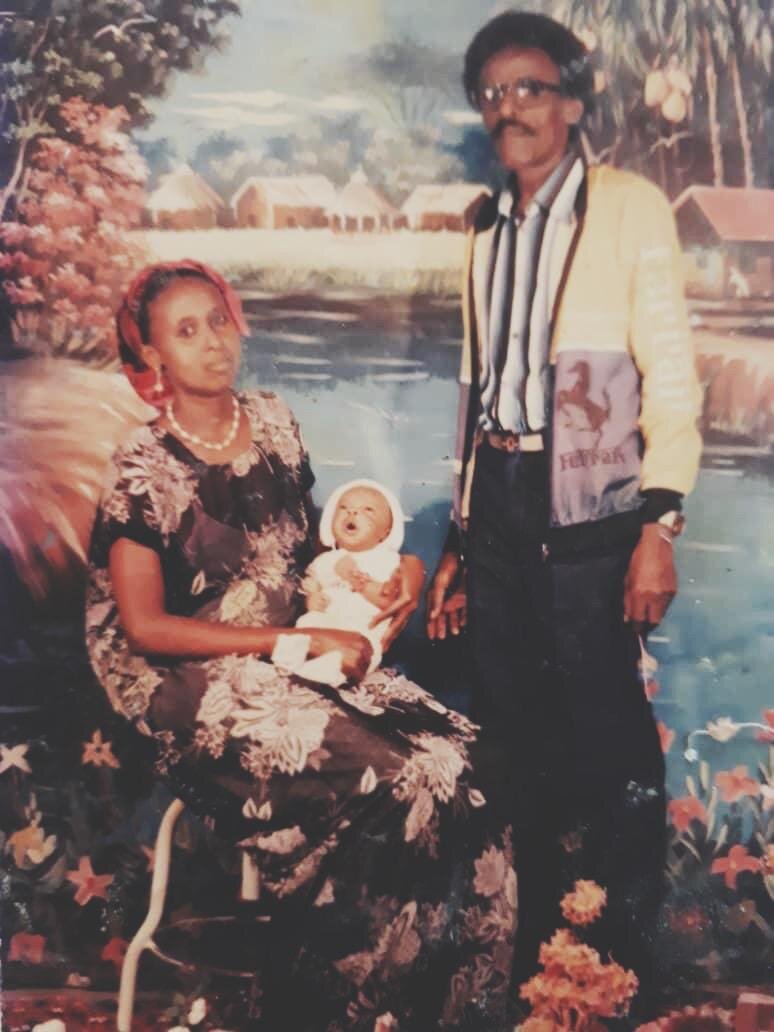Ha Iga Goosan Caawad Iga Gacan Sareeysaa: A look at Jamaac Tubeec’s seminal song
Idel elmi
The year is 1967, “Xabbadi Keentay” (meaning brought by bullets; the name was given to them by fellow Somali artists) have returned to the Somali Republic after they had to flee from Yemen due to an escalation of the Aden Emergency in 1966. Members of group included Maxamed Ibraahim Warsame (Hadraawi), Jamaac Saleebaan Tubeec, Maxamed Jamaac Ilkacase and Maxamed Siciid Baandey.
After fleeing from Yemen, the group went to Xamar and started working on the play called “Reer Ba'oow yaa ku leh?”, the name derived from a Somali proverb meaning “Oh, neglected family members, who do you belong to?”, and was a satirical take on the political situation of the Somali Republic at that time.
Maxamed Ibraahim Warsame (Hadraawi) was the playwright who wrote the script alongside Maxamed Jamaac Ilkacase who wrote the lyrics for the majority of the songs. In Xamar they were joined by Faadumo Axmed Dhimbiil [a singer from Djbouti], Asli Khayre Gabboon and Cabdiraxmaan Xasan Sheekh (Aburaas), were casted for this play.
The play's protagonist is a man, who is given a government office job for which he doesn't meet the criteria nor does he possess the necessary skills to execute it well. However, he is determined to govern and control the people working for him with ignorance. When given the opportunity to hire new people, he chooses one ina-adeer after another (cousin from paternal side) practising nepotism without any remorse or shame, regardless of being surrounded by knowledgeable , willing and brilliant minds, who would have met and easily fulfilled the requirements for the open positions.
The play is first performed in Xamar and then toured throughout the Somali Republic including smaller towns such as Jowhar, Galkayo and Qardho. All the way to Boosaaso, Burco and Berbera. The singing was solely accompanied by the Kaban, which was played by Jamaac [he also composed the majority of the melodies for the songs], alongside the drums which were played by Goobbe, who joined the group later on and taught himself how to play.
The song “Ha Iga Goosan” was not in the original play, but was later added to the repertoire, after they visited Burco as one of their tour stops. It was there that Jamaac crossed paths with his ex-wife and who expressed to him, after years of having not seen him, her aspiration for them to reconcile their relationship. To process the rather emotional encounter in Burco Jamaac writes the lyrics and composes the melody for the song.
Sensing the significance and importance of that moment, it was Hadraawi’s idea to add the song to the rotation. From that day forward “Ha Iga Goosan” was played during every performance.
After finishing the tour in Hargeisa and nearby towns, the group made their way back to Xamar. Faduma Axmed Dhimbil, who was the lead woman singer in the play, left the group to head back to Djibouti. It was then that Aamina Feyr joined and sang the known and recorded version of the song together with Maxamed Saleebaan Tubeec. Neither performed in the play at any time, their version was the one that ended up being recorded on tape and played on radio.
It was not uncommon that the final recording that aired on radio did not include the original singers. In many cases the play could be picked up again after a few years with a new set of actors and singers, resulting in the possibility of multiple versions of one song existing.
“Reer Ba'oow yaa ku leh?” included “Maahee Khadraay”, written by Maxamed Jamaac Ilkacase and composed by Jamaac Saleeban Tubeec, which was sung by Faadumo Dhimbiil and Cabdiraxmaan Abuuraas in the play. However, after Faadumo leaving the group, the song was later recorded by Sahra Axmed Jamaac and Maxamed Nuur Giriig. “Mays Heli Karnaa” was sung by Faadumo Dhimbiil and Maxamed Siciid Baandey for the play, but the recorded version most of us know was with Maxamed Nuur Giiriig.
The song allows the listener into what feels as an intrusion of privacy due to the intimate structuring of what can be described as a dialogue between the two involved parties. Due to the intimate structuring of the song, the listener almost feels like they are intruding on the privacy of the two singers.Starting the conversation is Aamina Feyr who carries the voice of the woman. With that the listener is introduced and made aware of the power dynamics at play in the song and the way that bias might arise. The man, who’s voice and perspective is echoed by the legendary Maxamed Saleebaan Tubeec, lends his voice to tell his side of the story. We need to keep in mind that marital problems and issues were seldom seen and discussed in public, the song gives us insights to how being a divorcee as a woman carried a stigma and women felt a need to make relationships work, that neither served them nor their partner any good. Understanding how women in the 50s/60s depended on men to provide for them and being divorced as a woman came with negative connotations, the lyrics echo that sentiment.
Thank you to Axmed, Amani, Yuusuf and Dr. Jama Musse for their continued support and advice.
Ha Iga Goosaan is available on all platforms.
Please consider buying the track on iTunes or Amazon, as all sales of the song go straight to the artists.
